Figure 1. Click to return to place in textLast month, we looked at using non-pressurized storage tanks with booster pumps to provide usable amounts of water when you have a slow-producing well. We mentioned several ways of communicating between the storage tank and well pump to tell the pump when to start filling the tank and when to stop. But, what if the tank is a half a mile away from the well up on a hill? That’s the issue we’ll discuss this month.
There are basically two ways to communicate between the tank and well pump when they are not in close proximity. One is by stringing wires between the two, which is the cheapest but also the least reliable because of all the forces that tend to disrupt long runs of wire like wind, fallen trees or branches, rodents and thieves. The second is using low-power radios: a transmitter at the tank and a receiver at the pump to provide the communication link. Float switches in the tank are normally used to provide the water level information.
Low-power transmitters and receivers are used for many applications, from tasks as simple as unlocking your car and opening your garage door, to gathering telemetry information about pressure and flow rate to control a pump VFD. In this article we will focus on turning a pump on and off from a remotely located storage tank.
Here are some factors to consider in choosing a wireless remote pump control system.
How far apart are the pump and tank from each other, and are they within line of sight of each other? This determines the range of the radios needed.
How many floats will be required based on how tall the storage tank is? This is important because it determines the number of channels the radios need.
In No. 1, different manufactures have different range offerings. For instance, one company offers three ranges. They consider systems less than a half-mile apart to be short range. Systems between a half-mile and two miles apart are considered medium range, and systems from two to five miles apart are considered long range.
Another company offers two ranges: a standard unit with a range up to one and a half miles and a high-power unit with a range up to five miles. Keep in mind that these ranges are for line-of-sight installations. Any obstruction, such as trees, buildings, or hills, will reduce the range of the radios and must be taken into consideration, and it’s best to contact the manufacturer for their recommendation.
FCC rules allow these low-power transmitters to operate without a license if the range is five miles or less. For installations where the tank and pump are farther apart than that or where there are line of sight issues, repeaters are available.
As to the number of floats in question No. 2, the issue here is tangling the float wire if it is too long. Generally, a 2-foot lead from the float to the float wire attachment point is considered a maximum. Therefore, a single-float system can control a pump supplying a tank with 4 feet of draw down. See Figure 1. If the draw down is more than 4 feet, a second float will be required and either a two-channel radio or one with circuitry in the transmitter that recognizes the difference between the top float and bottom float. See Figure 2.
One issue that needs addressing is the fact that there is often no electric power at the tank to power the transmitter. Some wireless system manufacturers install long-life rechargeable batteries in their transmitters that can last for several years before needing recharging. With others, you’ll need to provide a source of electricity to power the transmitter. A deep-cycle battery and small solar array to keep it charged are often enough.
There are a number of companies offering wireless remote control pump systems. I’ll mention three that are popular in my area. An Internet search will bring up many more. They range in price from $500 for the simplest DIY-type setups where you’ll need to add your own transmitter power supply, to several thousand dollars for a purpose-built pump control system with built-in transmitter power supply. Your local pump distributor may stock some type of wireless pump control system and offer post-sale support to get you up to speed on the first few installations.
The least expensive option I know of is from Linear Corporation, a California-based company. They manufacture a wide range of electronic devices, including wireless gate controllers that can also be used to control pumps. Their Model XT-1 transmitter (see figure 3) and XR-1 receiver claim a line-of-sight range of five miles, come in weather resistant cases and are available online or through distributors listed on their website. The transmitter requires a 12-volt power supply, so you’ll need to add a deep-cycle battery and solar recharging system. For more information, go to www.linearcorp.com.
Isaacs & Associates in Walla Walla, Wash., manufacturers a series of purpose-built wireless remote pump control systems. See Figure 4. Their transmitters come with a rechargeable lithium battery that lasts one to two years and has a range of one and a half to five miles, depending on model. Repeaters are available for systems with line-of-sight issues. They have models to accommodate single or multiple floats, and they also offer float switches. For more information, contact www.isaacstech.com.
Remote Control Technology in Redmond, Wash., makes short-, medium- and long-range wireless remote control systems for pumps. See Figure 5. Like the Linear units, the transmitters require 12 volts, which you will have to supply, but other than that they are ready to install—complete with antenna and lightning arrestors in NEMA 4X enclosures. Several pump distributors stock these units, and you will find more information at remotecontroltech.com.
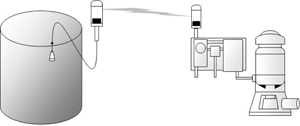 |
| Figure 1. Click to return to place in text |
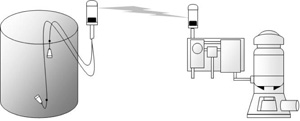 |
| Figure 2. Click to return to place in text |
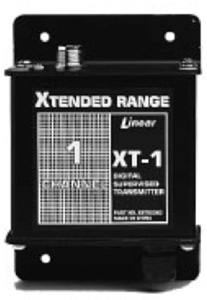
|
| Figure 3. Click to return to place in text |
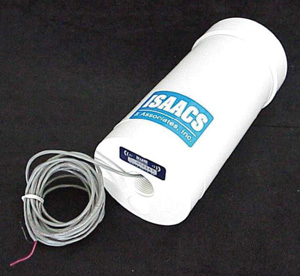
|
| Figure 4. Click to return to place in text |
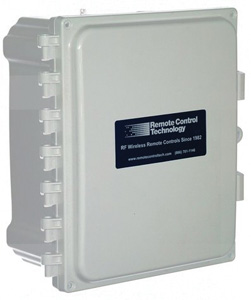 |
| Figure 5. Click to return to place in text |


Report Abusive Comment